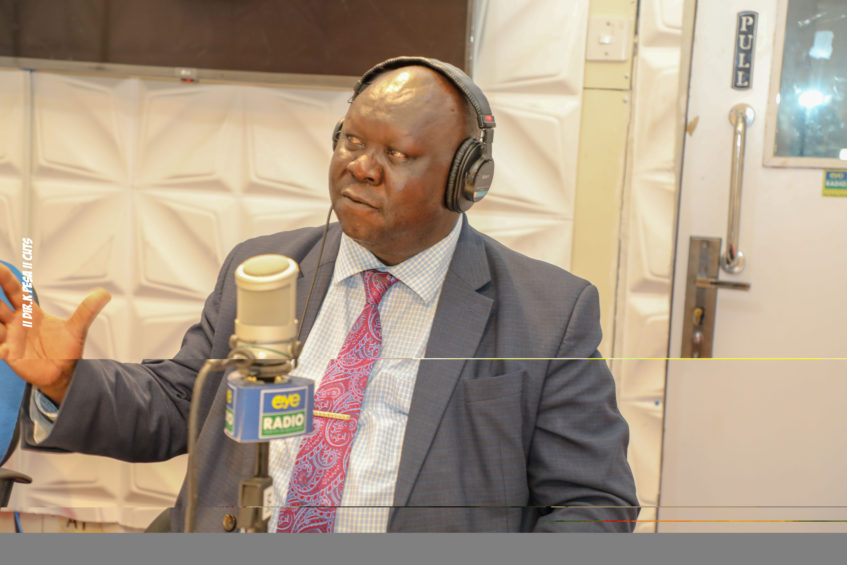
Dr. Cosmas Pitia, an earthquake expert - credit | Lou Nelson/Eye Radio | March 2, 2022
An earthquake expert has advised the government on disaster preparedness and risk reduction following recurrence tremor in the country.
This comes after the country experienced four tremors between 2021 and 2022 respectively.
According to the U.S. Geological Survey, in recent history one of the strongest earthquakes measuring 7.5 Ritcher scale to have hit Africa occurred in Southern Sudan on May 19, 1990.
There were no reports of casualties or damage from the tremor though experts say a temblor of that size is capable of causing widespread destruction.
On Friday morning residents in Juba experienced light shaking, rattling, and vibration of the earth.
Earthquake monitoring website—All Quakes said it received reports of an earthquake near Juba, at around 3:36 GMT.
It paced the magnitude at 3.2 with a depth of 10.0 kilometers.
According to Dr. Cosmas Pitia the latest earthquake, which is the fourth in a span of two years, is a timely reminder for the government to prepare and put in place risk reduction mechanisms in case of a bigger tremor that may cause destruction.
“We have recurrent earthquakes now happening and when we get smaller ones like what happened recently, we should expect a major one to happen. Once you are expecting a disaster to happen anytime then you have to get prepared for the risk of what will happen,”
“In our case for example, we are building and major infrastructural projects are ongoing. You cannot stop people from building because the area is having recurrence earthquakes but this should be done in collaboration with the line ministry.
“If you want to build, there is a building code and that should be taken into account because we are now getting higher magnitude earthquakes. Even the recent one, if people can feel it, means later on if we have another one of 7.1 magnitude like the 1990, it will be a real disaster. We need to avoid those risks earlier.”
South Sudan lacks sensors to map and better understand potential seismic risks.
Some earthquake-prone countries such as Mexico use early warning systems to broadcast seismic alerts.
According to Dr. Pitia South Sudan has no single seismometer.
He says Earthquakes in the country occur with no warning saying in the event of a huge tremor it will be more destructive.
Dr. Pitia now called on the government to get a seismic centre.
“We are supposed to have an observatory that is recording earthquakes, we should have seismometers in the country. In 1990 a major earthquake happened in Juba and it was among the major ones that happened in the continent and we need to be vigilant,” Pitia said.
“You remember, the earthquake that hit Morocco and destroyed the whole city and one happened in Lake Tanganyika and fortunately there was no damage.
“As long as you are thinking of development that means you will have infrastructure and this includes roads, bridges, dams, high rising storage buildings and all this can be destroyed with a single tremor.
“If we have another 7.1 now it may destroy part of our city, part of our highway, part of our bridges. We need to have something to monitor so that we will know exactly when you need to place a dam, it cannot be placed close to a known place of earthquake.”
South Sudan, particularly Juba, is seismically active and it is a matter of time before another one like the 1990 quakes hits.
Support Eye Radio, the first independent radio broadcaster of news, information & entertainment in South Sudan.
Make a monthly or a one off contribution.
Copyright 2024. All rights reserved. Eye Radio is a product of Eye Media Limited.